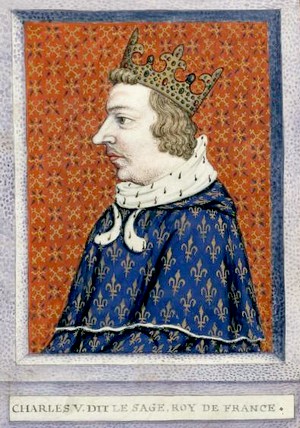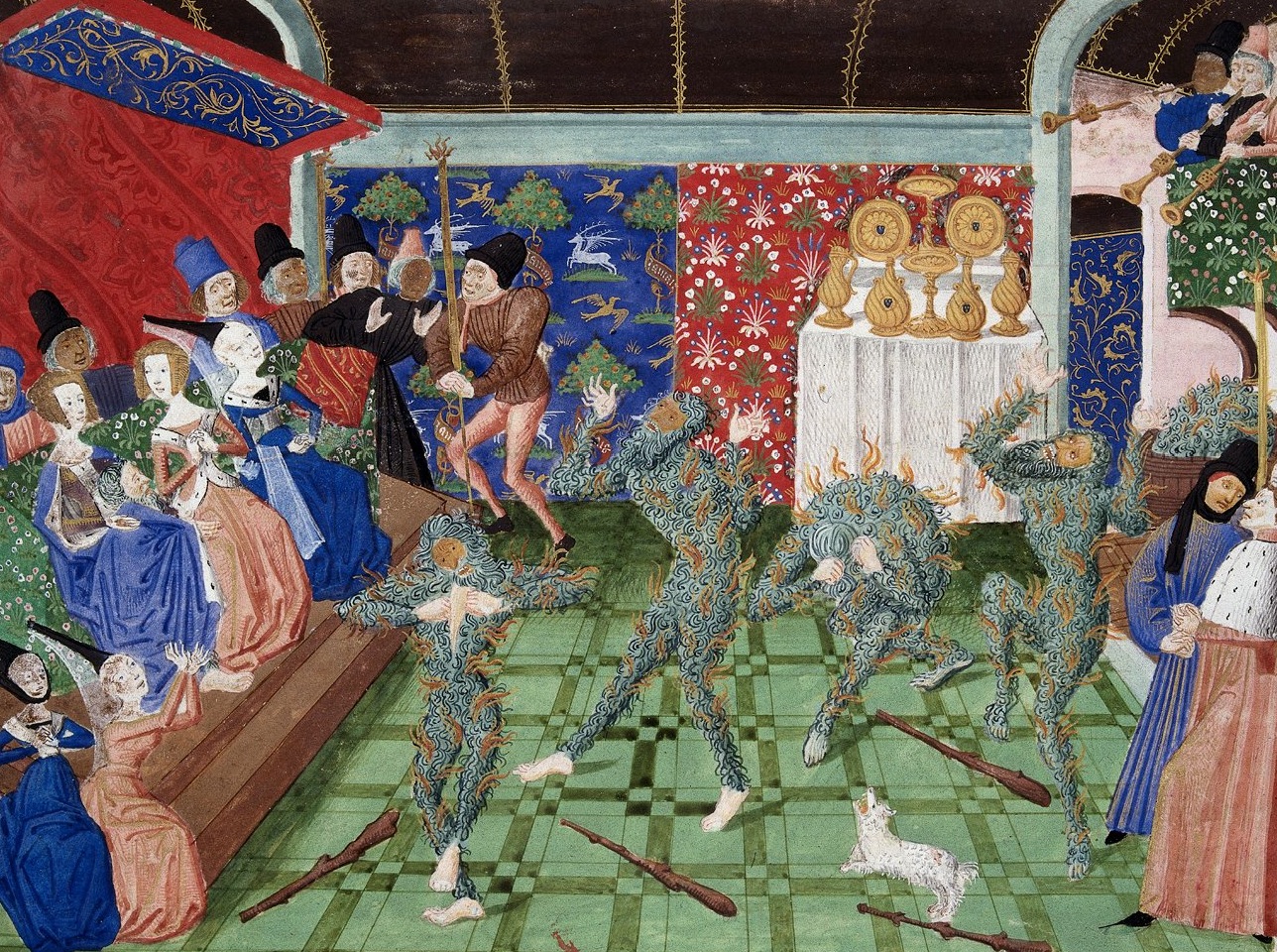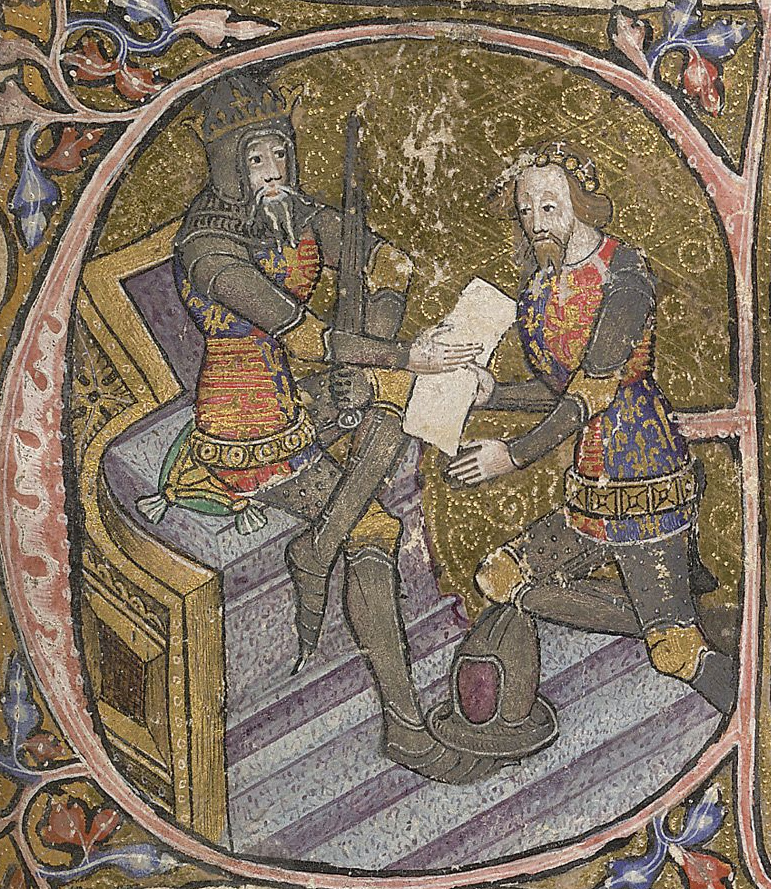|
Chronique Des Quatre Premiers Valois
The ''Chronique des quatre premiers Valois'' is an Old French chronicle covering the years 1327–1393. This corresponds to the reigns of the French kings John II, Charles V and Charles VI, the first four kings of the House of Valois">Charles VI of France">Charles VI, the first four kings of the House of Valois. The chronicle ends with Charles VI's madness. It is known from a single manuscript copy of the 15th century, now in Paris, Bibliothèque Nationale de France, Français 10468. The ''Chronique'' was ignored from its completion until the discovery of the manuscript by , who published an edition in 1862, supplying it with the title by which it is now known. Two remarks in the ''Chronique'' indicate that it was written in the period 1377–1397, while Richard II was ruling England and Philip of Alençon was archbishop of Auch. The author does not identify himself or his location, but numerous references to Rouen Rouen (, ; or ) is a city on the River Seine, in northwes ... [...More Info...] [...Related Items...] OR: [Wikipedia] [Google] [Baidu] |
Old French
Old French (, , ; ) was the language spoken in most of the northern half of France approximately between the late 8th [2-4; we might wonder whether there's a point at which it's appropriate to talk of the beginnings of French, that is, when it was deemed no longer make to think of the varieties spoken in Gaul as Latin. Although a precise date can't be given, there is a general consensus (see Wright 1982, 1991, Lodge 1993) that an awareness of a vernacular, distinct from Latin, emerged at the end of the eighth century.] and mid-14th centuries. Rather than a unified Dialect#Dialect or language, language, Old French was a Dialect cluster, group of Romance languages, Romance dialects, Mutual intelligibility, mutually intelligible yet Dialect continuum, diverse. These dialects came to be collectively known as the , contrasting with the , the emerging Occitano-Romance languages of Occitania, now the south of France. The mid-14th century witnessed the emergence of Middle French, the lang ... [...More Info...] [...Related Items...] OR: [Wikipedia] [Google] [Baidu] |
Philip VI Of France
Philip VI (; 1293 – 22 August 1350), called the Fortunate (), the Catholic (''le Catholique'') and of Valois (''de Valois''), was the first king of France from the House of Valois, reigning from 1328 until his death in 1350. Philip's reign was dominated by the consequences of a succession dispute. When King Charles IV of France died in 1328, his nearest male relative was his sororal nephew, Edward III of England, but the French nobility preferred Charles's paternal cousin, Philip of Valois. At first, Edward seemed to accept Philip's succession, but he pressed his claim to the throne of France after a series of disagreements with Philip. The result was the beginning of the Hundred Years' War in 1337. After initial successes at sea, Philip's navy was annihilated at the Battle of Sluys in 1340, ensuring that the war would occur on the continent. The English took another decisive advantage at the Battle of Crécy (1346), while the Black Death struck France, further destabi ... [...More Info...] [...Related Items...] OR: [Wikipedia] [Google] [Baidu] |
John II Of France
John II (; 26 April 1319 – 8 April 1364), called John the Good (French: ''Jean le Bon''), was King of France from 1350 until his death in 1364. When he came to power, France faced several disasters: the Black Death, which killed between a third and a half of its population; popular revolts known as ''Jacqueries''; Free company, free companies (''Grandes Compagnies'') of routiers who plundered the country; and English aggression that resulted in catastrophic military losses, including the Battle of Poitiers of 1356, in which John was captured. While John was a prisoner in London, his son Charles V of France, Charles became regent and faced several rebellions, which he overcame. To liberate his father, he concluded the Treaty of Brétigny (1360), by which France lost many territories and paid an enormous ransom. In an exchange of hostages, which included his son Louis I, Duke of Anjou, John was released from captivity to raise funds for Ransom of John II of France, his ransom. U ... [...More Info...] [...Related Items...] OR: [Wikipedia] [Google] [Baidu] |
Charles V Of France
Charles V (21 January 1338 – 16 September 1380), called the Wise (; ), was King of France from 1364 to his death in 1380. His reign marked an early high point for France during the Hundred Years' War as his armies recovered much of the territory held by the English and successfully reversed the military losses of his predecessors. Charles became regent of France when his father John II of France, John II was captured by the English at the Battle of Poitiers in 1356. To pay for the defense of the kingdom, Charles raised taxes. As a result, he faced hostility from the French nobility, nobility, led by Charles II of Navarre, Charles the Bad, List of Navarrese monarchs, King of Navarre; the opposition of the French bourgeoisie, which was channeled through the Estates General (France), Estates-General led by Étienne Marcel; and with a peasant revolt known as the Jacquerie. Charles overcame all of these rebellions, but in order to liberate his father, he had to conclude the Treaty ... [...More Info...] [...Related Items...] OR: [Wikipedia] [Google] [Baidu] |
Charles VI Of France
Charles VI (3 December 136821 October 1422), nicknamed the Beloved () and in the 19th century, the Mad ( or ''le Fou''), was King of France from 1380 until his death in 1422. He is known for his mental illness and psychosis, psychotic episodes that plagued him throughout his life. Charles ascended the throne at age 11, his father Charles V of France, Charles V leaving behind a favorable military situation, marked by the reconquest of most of the English possessions in France. Charles VI was placed under the regency of his uncles: Philip II, Duke of Burgundy; Louis I, Duke of Anjou; John, Duke of Berry; and Louis II, Duke of Bourbon. He decided in 1388, aged 20, to emancipate himself. In 1392, while leading a military expedition against the Duchy of Brittany, the king had his first attack of delirium, during which he attacked his own men in the forest of Le Mans. A few months later, following the ''Bal des Ardents'' (January 1393) where he narrowly escaped death from burning, Char ... [...More Info...] [...Related Items...] OR: [Wikipedia] [Google] [Baidu] |
House Of Valois
The Capetian House of Valois ( , also , ) was a cadet branch of the Capetian dynasty. They succeeded the House of Capet (or "Direct Capetians") to the List of French monarchs, French throne, and were the royal house of France from 1328 to 1589. Junior members of the family founded cadet branches in House of Valois#Dukes of Orléans, Orléans, House of Valois-Anjou, Anjou, House of Valois-Burgundy, Burgundy, and Counts and dukes of Alençon, Alençon. The Valois descended from Charles, Count of Valois (1270–1325), the second surviving son of King Philip III of France (reigned 1270–1285). Their title to the throne was based on a precedent in 1316 (later retroactively attributed to the Merovingian dynasty, Merovingian Salic law) which excluded females (Joan II of Navarre), as well as male descendants through the wikt:distaff side#English, distaff side (Edward III of England), from the succession to the French throne. After holding the throne for several centuries the Valois ma ... [...More Info...] [...Related Items...] OR: [Wikipedia] [Google] [Baidu] |
Bibliothèque Nationale De France
The (; BnF) is the national library of France, located in Paris on two main sites, ''Richelieu'' and ''François-Mitterrand''. It is the national repository of all that is published in France. Some of its extensive collections, including books and manuscripts but also precious objects and artworks, are on display at the BnF Museum (formerly known as the ) on the Richelieu site. The National Library of France is a public establishment under the supervision of the Ministry of Culture. Its mission is to constitute collections, especially the copies of works published in France that must, by law, be deposited there, conserve them, and make them available to the public. It produces a reference catalogue, cooperates with other national and international establishments, as well as participates in research programs. History The National Library of France traces its origin to the royal library founded at the Louvre Palace by Charles V in 1368. Charles had received a collection o ... [...More Info...] [...Related Items...] OR: [Wikipedia] [Google] [Baidu] |
Richard II Of England
Richard II (6 January 1367 – ), also known as Richard of Bordeaux, was King of England from 1377 until he was deposed in 1399. He was the son of Edward the Black Prince, Edward, Prince of Wales (later known as the Black Prince), and Joan, Countess of Kent. Richard's father died in 1376, leaving Richard as List of heirs to the English throne, heir apparent to his grandfather, King Edward III; upon the latter's death, the 10-year-old Richard succeeded to the throne. During Richard's first years as king, government was in the hands of a series of regency councils, influenced by Richard's uncles John of Gaunt and Thomas of Woodstock. England at that time faced various problems, most notably the Hundred Years' War. A major challenge of the reign was the Peasants' Revolt in 1381, and the young king played a central part in the successful suppression of this crisis. Less warlike than either his father or grandfather, he sought to bring an end to the Hundred Years' War. A firm ... [...More Info...] [...Related Items...] OR: [Wikipedia] [Google] [Baidu] |
Philip Of Alençon
Philip of Alençon (; 1339–16 November 1397) was a French cardinal who was a member of the Valois dynasty. He was the second son of Count Charles II of Alençon (grandson of King Philip the Bold and younger brother of King Philip VI of France), who was killed in the Battle of Crécy, and of Maria de La Cerda y de Lara (great-granddaughter of King Alfonso X of Castile). He was the younger brother of Count (later Archbishop) Charles III of Alençon. Born in the region of French Brie (), now the Department of Seine-et-Marne, Philippe entered Church service at an early age. He might have been the Archdeacon of Brie in his native Diocese of Meaux as a teenager. Philippe was named bishop of the Diocese of Beauvais, where he arrived on 24 March 1356 (aged 17) to take possession of the see, though he had not yet been consecrated, the details of which have been lost. After several years had passed without the confirmation of his appointment by the cathedral chapter, on 14 June 1360 he ... [...More Info...] [...Related Items...] OR: [Wikipedia] [Google] [Baidu] |





